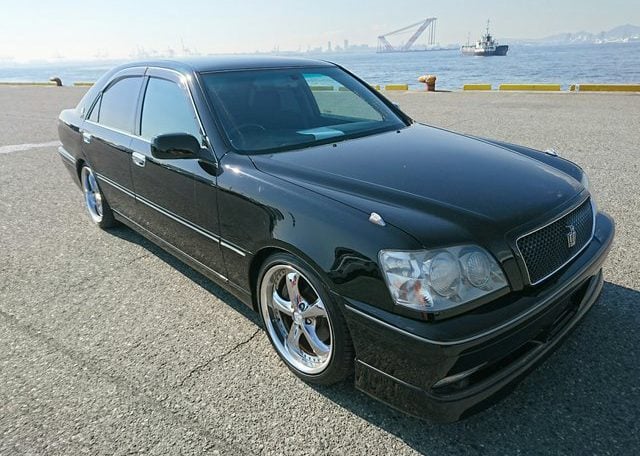SB: I’d have to say that the selection of the vehicle at auction is by far the most important part of the process, and also where there is some risk involved. I’d also have to say that this is where JCD excels. Our auction export agents are all extremely knowledgeable about cars and perfectly fluent in English and Japanese. These skills allow them to do perfectly accurate translations of auction sheets and get the very most out of the professional third-party inspections that we do before deciding to bid or not. We always do our utmost to get the best understanding of the vehicle’s condition and convey this objectively to our customers. In this way our customers know what they are bidding on and, in most cases, end up with vehicles in better condition than they expected.
DP: Actually, if I could just “toot our own horn” here a bit: We’ve had many really lovely customer reviews and testimonials over the years, and for those of our readers and potential customers who want to have a look at what other JCD customers have said about us, they can just click here.
They’ll also see some pretty nice photos of the good used cars we’ve shipped from Japan, now all settled in their new homes. Like this great photo of a used Toyota Land Cruiser that went to Washington State. He looks really at home in the forest to me!

Now, looking at the whole used car from Japan thing, the bidding, buying, and importing process, what points would you raise, and what advice would you give, for used car dealers who are buying and shipping multiple used vehicles from Japan?
SB: Well, the whole process is really the same, as we take care of each vehicle individually, one vehicle at a time. Maybe in the future if we are shipping 100s of vehicles on the same ship we might be able to work out a freight discount with the freight liner, but when the biggest Pure Car Carriers (PCC) can load as many as 6000 vehicles, that may not be easy.
(And as an aside for the guys who want to see what a big modern car carrier ship is like and what its capacities are, just click here.)
Now, some of our customers have used containers for multiple vehicles to cut the cost of freight or to ship to a port that doesn’t have RORO service, but currently (July, 2021) the cost of containers has gone sky high so that isn’t an option. One-way customers can decrease the import side cost of multiple vehicles is by having them listed on the same bill of lading, reducing clearance cost from approximately $300US on the first one down to around $50US from the second vehicle on.
DP: Let’s talk a bit now about the popular vehicles to import from Japan. Let me ask you a couple of questions: What are the most popular used vehicles to import from Japan today? And: Are there any vehicles that have surprised you by their popularity?
SB: Well, right off the bat I’d have to say that kei trucks / mini trucks, are very popular to import from Japan. But there’s no surprise in that (in fact, as I mentioned earlier in our interview, the second vehicle that we ever exported from Japan here at JCD was a Suzuki Carry) because Kei trucks are just so useful, so efficient, so inexpensive to run, so simple and so tough that the only surprising thing is that there’s not one in every farmer’s barn and in every landscaper’s yard.….world wide!
Moving up the scale, Japanese performance cars are very popular used cars to import direct from Japan: Drift cars like the Nissan Silvia, all wheel drive super cars like the Nissan Skyline GT-R, or the Mitsubishi Lancer Evo, or Subaru Impreza WRX STi, high tech muscle cars like the Toyota Supra, and many other examples of Japanese performance machines are steadily popular because they are fast, fun, and well-built. You had that Celica GT-Four, didn’t you?
DP: Yeah, I had that AWD super car (like this one here that we recently shipped to Australia) for almost six years, and I followed him with a WRX STi sports wagon. Scary fast car, that was.
SB: Moving up again, Japanese luxury cars like the Toyota Crown, the Toyota Century, the Nissan President, these are becoming increasingly popular used vehicles along with larger 4WD cars like the Hilux and the Land Cruiser, and full size vans like the Hiace.
Now, I guess that if any specific vehicle has surprised us by its popularity it would be the limited edition Lancia Delta HF Integrale Evoluzione, of which we have exported over 20 good units from Japan. We’ve actually got a dedicated page on our website about these cars. (DP: you can find it here.) But, over all, I would say that the number of used German and other European high end luxury and supercars, Mercedes Benz, AMG, Porsche, Ferrari even, that we have exported has been a bit of a surprise.
DP: Why’s that?
SB: Well, it’s just that, when we started this business, we envisioned that we would be simply giving good value to our customers by giving them access to good used Japanese cars at reasonable prices, which, of course, we are doing today, but the focus was mostly on economy….”modest cars,” if you want to put it that way. Modest Japanese cars. And, for a while now, we’ve had steady demand for used European cars that could only be described as spectacular and classic. So, yeah, a bit of a happy surprise there, and a nice sense of satisfaction for us, too: Keeping some of the best of both European and Japanese motoring heritage alive.










